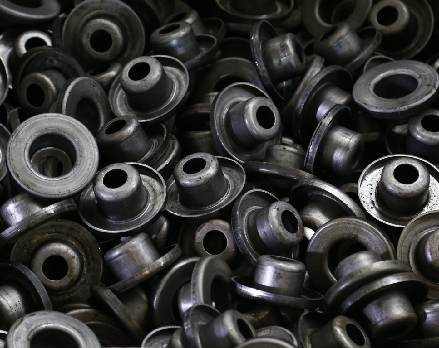 Afrikaans
Afrikaans  Albanian
Albanian  Amharic
Amharic  Arabic
Arabic  Armenian
Armenian  Azerbaijani
Azerbaijani  Basque
Basque  Belarusian
Belarusian  Bengali
Bengali  Bosnian
Bosnian  Bulgarian
Bulgarian  Catalan
Catalan  Cebuano
Cebuano  Corsican
Corsican  Croatian
Croatian  Czech
Czech  Danish
Danish  Dutch
Dutch  English
English  Esperanto
Esperanto  Estonian
Estonian  Finnish
Finnish  French
French  Frisian
Frisian  Galician
Galician  Georgian
Georgian  German
German  Greek
Greek  Gujarati
Gujarati  Haitian Creole
Haitian Creole  hausa
hausa  hawaiian
hawaiian  Hebrew
Hebrew  Hindi
Hindi  Miao
Miao  Hungarian
Hungarian  Icelandic
Icelandic  igbo
igbo  Indonesian
Indonesian  irish
irish  Italian
Italian  Japanese
Japanese  Javanese
Javanese  Kannada
Kannada  kazakh
kazakh  Khmer
Khmer  Rwandese
Rwandese  Korean
Korean  Kurdish
Kurdish  Kyrgyz
Kyrgyz  Lao
Lao  Latin
Latin  Latvian
Latvian  Lithuanian
Lithuanian  Luxembourgish
Luxembourgish  Macedonian
Macedonian  Malgashi
Malgashi  Malay
Malay  Malayalam
Malayalam  Maltese
Maltese  Maori
Maori  Marathi
Marathi  Mongolian
Mongolian  Myanmar
Myanmar  Nepali
Nepali  Norwegian
Norwegian  Norwegian
Norwegian  Occitan
Occitan  Pashto
Pashto  Persian
Persian  Polish
Polish  Portuguese
Portuguese  Punjabi
Punjabi  Romanian
Romanian  Russian
Russian  Samoan
Samoan  Scottish Gaelic
Scottish Gaelic  Serbian
Serbian  Sesotho
Sesotho  Shona
Shona  Sindhi
Sindhi  Sinhala
Sinhala  Slovak
Slovak  Slovenian
Slovenian  Somali
Somali  Spanish
Spanish  Sundanese
Sundanese  Swahili
Swahili  Swedish
Swedish  Tagalog
Tagalog  Tajik
Tajik  Tamil
Tamil  Tatar
Tatar  Telugu
Telugu  Thai
Thai  Turkish
Turkish  Turkmen
Turkmen  Ukrainian
Ukrainian  Urdu
Urdu  Uighur
Uighur  Uzbek
Uzbek  Vietnamese
Vietnamese  Welsh
Welsh  Bantu
Bantu  Yiddish
Yiddish  Yoruba
Yoruba  Zulu
Zulu Understanding the Functionality and Importance of Carrying Idler Rollers in Machinery
Understanding the Importance of Carrying Idler Rollers in Conveyor Systems
Conveyor systems are an integral part of modern manufacturing and material handling processes. They provide efficient and continuous movement of goods from one point to another, significantly enhancing productivity. Among the various components of a conveyor system, carrying idler rollers play a crucial role in ensuring smooth operation and optimal performance. This article delves into the significance, types, applications, and maintenance of carrying idler rollers.
What Are Carrying Idler Rollers?
Carrying idler rollers are cylindrical components typically mounted on a conveyor frame. They support the conveyor belt and help transport materials along the conveyor. These rollers are designed to withstand heavy loads and provide low rolling resistance, which is essential for minimizing energy consumption and enhancing the overall efficiency of the conveyor system.
The Importance of Carrying Idler Rollers
1. Load Support The primary function of carrying idler rollers is to support the weight of the conveyed materials. By distributing the load evenly across the conveyor belt, they prevent sagging and ensure that the materials are transported without interruption.
2. Reducing Friction Idler rollers reduce friction between the conveyor belt and the supporting structure. This is vital for maintaining the efficiency of the conveyor system, as excessive friction can lead to increased energy consumption and premature wear of the components.
3. Alignment and Stability Carrying idler rollers help maintain the alignment of the conveyor belt, ensuring it runs smoothly along the designated path. Proper alignment is crucial for preventing belt drift, which can lead to material spillage and system inefficiencies.
4. Extended Equipment Life By providing proper support and reducing wear and tear on the conveyor belt, idler rollers contribute to the longevity of the entire conveyor system. This not only reduces replacement costs but also minimizes operational downtime.
Types of Carrying Idler Rollers
Carrying idler rollers come in various types, each designed for specific applications
1. Plain Rollers These are the most common type of idler rollers, typically used for general-purpose applications. They have a simple design and can handle a range of loads.
2. V-Groove Rollers These are designed to guide the conveyor belt and prevent lateral movement. They are commonly used in applications where belt drift is a concern.
carrying idler roller

3. Rubber-Coated Rollers These rollers are coated with rubber to provide additional grip and reduce slippage, especially in applications involving wet or slippery materials.
Applications of Carrying Idler Rollers
Carrying idler rollers are utilized in a wide range of industries, including
- Manufacturing In production lines for moving raw materials and finished products. - Mining For transporting mined substances over long distances. - Agriculture In the transport of bulk grains and other agricultural products. - Logistics In warehouses and distribution centers for efficient material handling.
Maintenance of Carrying Idler Rollers
To ensure optimal performance and longevity of carrying idler rollers, regular maintenance is critical. This includes
1. Inspection Periodic inspection for signs of wear, damage, or misalignment is essential. Checking for dust and debris accumulation is also vital, as these can impede roller function.
2. Lubrication Many idler rollers come equipped with bearings that require regular lubrication. Ensuring that these bearings remain properly lubricated will help prevent overheating and wear.
3. Alignment Checks Regularly checking and adjusting the alignment of idler rollers is crucial for maintaining the efficiency of the conveyor system.
4. Replacing Worn Rollers Identifying and replacing worn or damaged rollers promptly can prevent larger issues down the line.
In conclusion, carrying idler rollers are pivotal components in conveyor systems, providing essential support, reducing friction, and contributing to the overall efficiency and longevity of the equipment. Understanding their importance and maintaining them effectively can lead to significant improvements in operational productivity across various industries.
-
Revolutionizing Conveyor Reliability with Advanced Rubber Lagging PulleysNewsJul.22,2025
-
Powering Precision and Durability with Expert Manufacturers of Conveyor ComponentsNewsJul.22,2025
-
Optimizing Conveyor Systems with Advanced Conveyor AccessoriesNewsJul.22,2025
-
Maximize Conveyor Efficiency with Quality Conveyor Idler PulleysNewsJul.22,2025
-
Future-Proof Your Conveyor System with High-Performance Polyurethane RollerNewsJul.22,2025
-
Driving Efficiency Forward with Quality Idlers and RollersNewsJul.22,2025





























